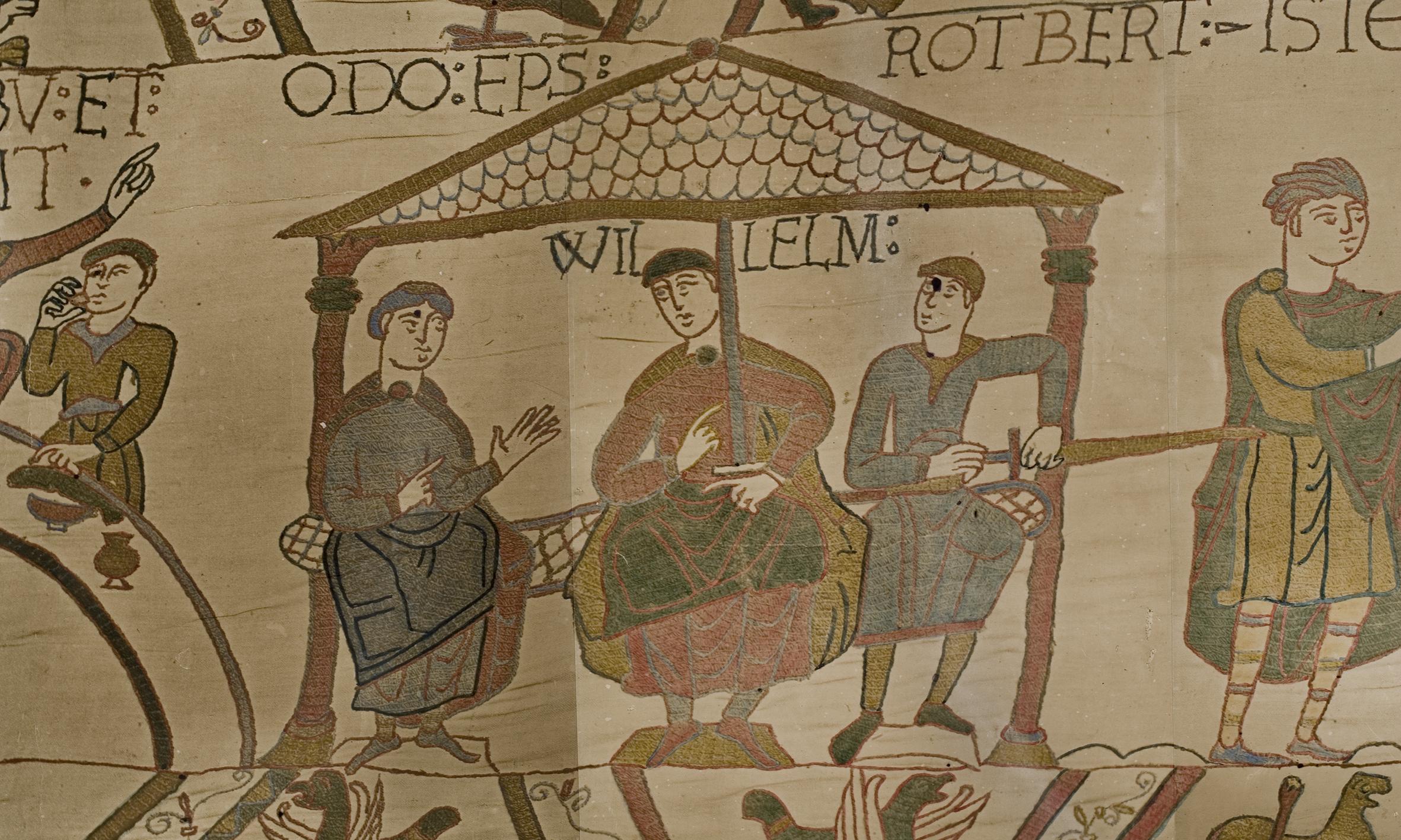Detail from photograph of the Bayeux Tapestry by Cundall & Co., 1873. Produced for the Department of Science and Art to be issued through the Arundel Society © Victoria and Albert Museum, London
Researchers at the Victoria and Albert Museum (V&A) in London have teamed up with officials in the city of Bayeux, France to work together and share expertise on the Bayeux Tapestry, deepening a relationship that started more than 150 years ago. Both organisations have signed a memorandum of understanding, opening up new avenues for research, curatorial and scientific exchange.
The Bayeux Tapestry is an Medieval embroidery, 70m long and 50cm high. Created in the 1070s, the nine panels with 58 scenes depict events leading up to the Norman Conquest of England after the Battle of Hastings in 1066. The tapestry was probably commissioned by Bishop Odo, the half-brother of William the Conqueror, the Duke of Normandy.
The South Kensington museum was keen to make a copy of the Bayeux Tapestry in 1869 which involved careful negotiation between the museum’s first director, Henry Cole and the Mayor of Bayeux, M. Urbain-Abel Marc. A detailed V&A blog by Ella Ravilious describes how the South Kensington Museum began thinking about making a photographic copy of the tapestry to add to its collection of replicas of famous works.
As a result of the negotiations, Joseph Cundall, the Victorian photographer, was given permission to photograph the entire Bayeux Tapestry in situ in 1872 for the museum’s Science and Art Department. Cundall arranged it through his company, commissioning the photographer Edward Dossetter to do the work. Dossetter went to Normandy between September and December of 1872 and made over 180 glass negatives, detailing each section of the tapestry.
A key focus of the V&A’s and the City of Bayeux’s collaboration is a research, conservation and digitisation project around the photographic negatives. “Subject to funding, the glass plates from 1872 will be digitised, then integrated into a unique digital database that will showcase the Bayeux,” says the V&A in a statement.
Ravilious’s blog describes how Cundall’s project evolved, saying that because of the unexpected cost of enlargement, the photographer had to go back to the museum’s director Henry Cole with a revised quote for the work, which was approved. “The final process required 180 glass plates to make and is the largest photographic panorama made in the nineteenth century. The printing from the negatives was done using a photomechanical printing process called the Woodburytype, invented and patented by Walter Woodbury in 1864,” she writes.
Glass plate negative of the Bayeux Tapestry by Edward Dossetter, ca. 1872 © Victoria and Albert Museum, London
The V&A wanted its replica to be as accurate as possible, and set out to reproduce its black-and-white copy in full colour. Ravilious describes how Thomas Walter Wilson from the National Art Training School was sent to Normandy to copy the correct colours on to the photographs by hand. The completed replica was finally exhibited at the International Exhibition in April 1873. After the exhibition closed, it was put on display in the Cast Courts at the South Kensington Museum—as the V&A was then known—on a rolling mechanism that people could scroll through.
The Arundel Society made six full-size copies in total, each of them hand-coloured, presumably using Walter Wilson’s first hand-coloured version as a ‘master copy’ to get the colours right for the rest, Ravilious adds. The new partnership will also provide the City of Bayeux access to the two Arundel Society copies of the Bayeux Tapestry in the V&A collection.
There is another lesser known link between the V&A and Bayeux. The London museum once owned a fragment of the tapestry which, according to a V&A archive document, was one of two snippets removed surreptitiously by Charles Stothard sometime between 1816 and 1818 when he was engaged in producing a full scale drawing of the tapestry for the Society of Antiquaries, London. The fragment was returned to Bayeux in 1872; an exhibition,Tapisserie de Bayeux: Fragments d'histoires, at the MAHB – Musée d'Art and History Baron Gérard in Bayeux (until 18 September) tells the story of the V&A fragment.
Plans to loan the Bayeux Tapestry to the United Kingdom have stalled however because of concerns about the fragile state of the centuries-old item. Last year, Museums Journal reported that a condition report published in February 2021 complicated tapestry loan arrangements to the UK; experts analysing the artefact found its condition to be worse than expected.

